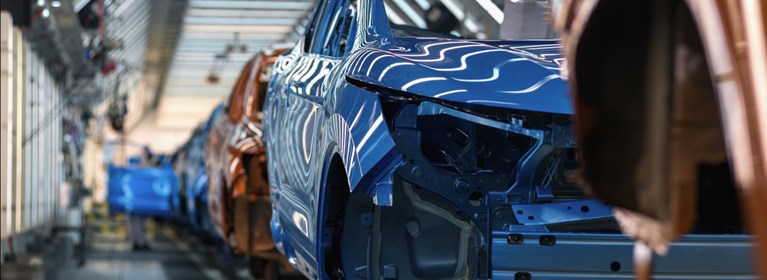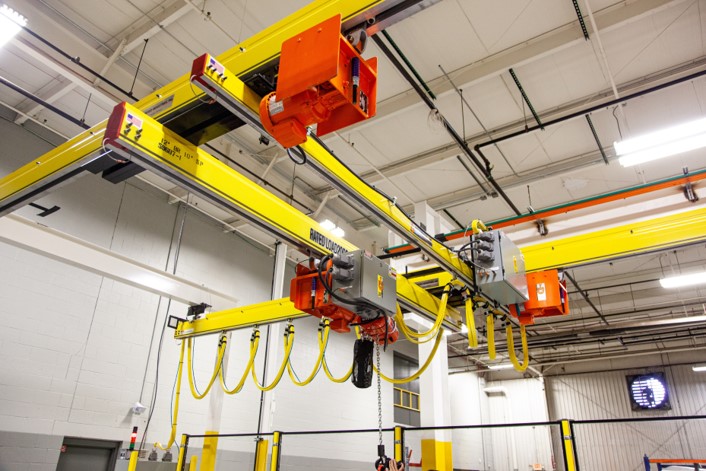
Semi vs. Fully Automated Auto-Dispatch Technology: What’s the Difference?
Automation | Hoisting & Lifting | Crane Systems | Safety and Training | by Columbus McKinnon | 04 Jun 2021
In a recent blog, we discussed the benefits of auto-dispatch technology and the impact it can have on safety, uptime, and productivity. Some of these benefits include improved facility and operator safety, increased uptime, improved space efficiency, streamlined operations, and increased material flow.
Now that you understand the benefits of auto-dispatch, you may be wondering how to implement this technology in your facility and integrate it into your processes. There are two levels of control to choose from when looking at auto-dispatch technology: semi-automated or fully automated. Before you can choose one, you should understand the differences between them and the capabilities they can provide. Let’s take a closer look.
Semi-Automated Auto-Dispatch Technology
In a semi-automated configuration, auto-dispatch technology enables automated movement while also utilizing human assistance for precise actions. This keeps the operator closely involved in the process, allowing them to initiate movement, but also makes the process more streamlined and safer with automated material flow and obstruction avoidance. For example, on an automobile production line, semi-automated controls can be used to lift and move an engine close to a transmission. Then, an operator can take over to complete the final positioning and attach the two pieces together.
Another benefit of the semi-automated configuration is that multiple areas can share a single crane. With a shared crane, finished products can travel through one, all, or a combination of work locations, depending on process needs.
For example, our ProPath™ Automated Workstation Crane allows an operator to initiate movement via a radio remote control or pendant pushbutton station, directing the crane to travel to a specific location. Variable Frequency Drives power the bridge, trolley, and hoist motions to provide precise positioning within one-half inch. Using specialized software designed for material handling applications, parameters such as hook height, load status, and speed can be programmed, monitored, and adjusted as necessary. After the task at a workstation is complete, an operator can send the crane and the load to the next station or a different operator. This helps eliminate wasted effort while enabling the operator to have input in the process.
Fully Automated Auto-Dispatch Technology
Fully automated configurations require no human assistance beyond setup. Once in place, a fully automated system ensures accurate, repeatable processes to enhance process flow, ultimately reducing idle time, improving cycle times for increased productivity, and maintaining consistent operation.
Intelligence is an added benefit of fully automated technology. Fully automated systems allow you to pre-program your crane to travel along a designated path, preventing potential collisions with other equipment or operators. Fully automated technology does the work for you by eliminating the need for specialized skills or knowledge of lifting technology and may incorporate sway control or protected zones, reducing the element of human error.
These systems can be programmed to perform safety checks and ensure all parameters are met before operation begins. From there, the system delivers critical, real-time data to a laptop, tablet, or human machine interface (HMI), which can remotely start, program, monitor, or troubleshoot the entire system. With continuous diagnostic and analytic information, you can also plan for maintenance more easily, helping increase uptime.
No matter which type of auto-dispatch system you use, it can be configured to your exact requirements through a combination of radios, drives, motors, brakes, and automation programming. This gives you the flexibility you need to easily integrate it into your unique manufacturing processes.
Want to learn more about what auto-dispatch technology and crane automation can do for you? Contact us today. We can help you take advantage of this technology in your applications and tell you more about our innovative crane automation solutions, such as our ProPath Automated Workstation Crane or Intelli-Guide™ Auto-Dispatch Technology.
Related Articles
One form of crane automation technology that can have a big impact on your facility and operations is an auto-dispatch system. How can this help? Combining radios, drives, motors, brakes, and automation programming, auto-dispatch systems allow operators to automatically send a load to pre-programmed areas in a facility with the push of a button. They no longer need to manually guide or follow the load to the next location in the process. Learn more about all of the benefits.
Auto-Dispatch System for Automotive Application
Magnetek Automated Solutions
In automobile manufacturing, time is money. Every minute saved in the process can move another vehicle off the line and into the market. To increase efficiency and reduce process time, a high production automobile manufacturer needed to reduce the takt time for the engine and transmission marriage process. Specifically, the manufacturer was using a manual marriage cell where several processes had to be performed by a single operator. This included picking hardware, selecting traverse time, marrying two heavy components (an engine and a transmission), and installing a wiring harness and attachment hardware.

 EMEA - EN
EMEA - EN


